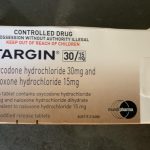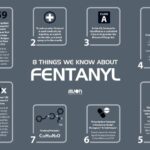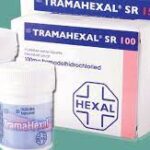Buprenorphine: Uses, Side Effects, Addiction

What is Buprenorphine?
Buprenorphine is a medication approved by the Food and Drug Administration (FDA) to treat opioid use disorder (OUD) as a medication-assisted treatment (MAT). As with all medications used in MAT, buprenorphine is prescribed as part of a comprehensive treatment plan that includes counseling and other behavioral therapies to provide patients with a whole-person approach. Buprenorphine and all products containing buprenorphine are controlled in schedule III of the Controlled Substances Act.
Buprenorphine is the first medication to treat OUD that can be prescribed or dispensed in physician offices, significantly increasing access to treatment. The Drug Addiction Treatment Act of 2000 (DATA 2000), the Comprehensive Addiction and Recovery Act (CARA) and the Substance Use-Disorder Prevention Opioid Recovery and Treatment for Patients and Communities (SUPPORT) Act allows qualified practitioners to dispense or prescribe buprenorphine for the treatment of opioid use disorders (OUD) in settings other than opioid treatment programs (OTP), upon completion of specialized training.
Other names
Pharmaceutical name
- Suboxone Sublingual Film® – A combination of buprenorphine and naloxone (also known as Narcan®). This is the most widely used form.
- Subutex Sublingual Tablets® – Contains only buprenorphine.
- Buvidal® is a modified release formulation of buprenorphine for administration by subcutaneous (SC) injection once a week (Buvidal® Weekly) or once a month (Buvidal® Monthly).
- Sublocade® is an extended-release formulation of BPN, administered monthly by SC injection.
Slang names
Bup, B, subs, bupe, orange
How should buprenorphine be used?
Buprenorphine comes as a sublingual tablet. The combination of buprenorphine and naloxone comes as a sublingual tablet (Zubsolv) and as a sublingual film (Suboxone) to take under the tongue and as a buccal film (Bunavail) to apply between the gum and cheek. After your doctor determines an appropriate dose, these products are usually taken once a day. To help you remember to take or apply buprenorphine or buprenorphine and naloxone, take or apply it around the same time every day. Follow the directions on your prescription label carefully, and ask your doctor or pharmacist to explain any part you do not understand. Take or apply buprenorphine or buprenorphine and naloxone exactly as directed. Do not take or apply more or less of it or take or apply it more often than prescribed by your doctor.
Your doctor may decide to start your treatment with buprenorphine, which you will take in the doctor’s office. You will start on a low dose of buprenorphine and your doctor will increase your dose for 1 or 2 days before switching you to buprenorphine and naloxone. Depending on the type of opioid that you were taking, a different option that your doctor may choose is to start you on treatment with buprenorphine and naloxone right away. Your doctor may increase or decrease your buprenorphine and naloxone dose depending on your response.
If you are taking the sublingual tablets, place the tablets under your tongue until they completely melt. If you are taking more than two tablets, either place them all under your tongue at the same time or place them under your tongue up to two at a time. Do not chew the tablets or swallow them whole. Do not eat, drink, or talk until the tablet dissolves completely.
If you are using the buccal film, use your tongue to wet the inside of your cheek or rinse your mouth with water before you apply the film. Apply the film with a dry finger against the inside of the cheek. Then remove your finger and the film will stick to the inside of your cheek. If you are to use two films, place another film on the inside of your other cheek at the same time. Do not apply films on top of each other and do not apply more than two films to the inside of the mouth at one time. Leave the film(s) in the mouth until they dissolve. Do not cut, tear, chew, swallow, touch or move the film while it dissolves. Do not eat or drink anything until the film dissolves completely.
If you are using the sublingual film, rinse your mouth with water before you place the film. Place the film with a dry finger under your tongue to the right or left of the center and hold the film in place for 5 seconds. If you are using two films, place the other one on the opposite side under the tongue. Do not put the films on top of or near each other. Do not use more than two films at one time. Do not cut, tear, chew, swallow, touch or move the film while it dissolves. Do not eat or drink anything until the film dissolves completely.
If you need to switch from one buprenorphine or buprenorphine and naloxone product to another, your doctor may need to adjust your dose. Each time you receive your medication, check to be sure that you have received the buprenorphine product that was prescribed for you. Ask your pharmacist if you have are not sure that you received the right medication.
Do not stop taking buprenorphine or buprenorphine and naloxone without talking to your doctor. Stopping buprenorphine or buprenorphine and naloxone too quickly can cause withdrawal symptoms. Your doctor will tell you when and how to stop taking buprenorphine or buprenorphine and naloxone. If you suddenly stop taking buprenorphine or buprenorphine and naloxone, you may experience withdrawal symptoms such as hot or cold flushes, restlessness, teary eyes, runny nose, sweating, chills, muscle pain, vomiting, or diarrhea.
Buprenorphine side effects
Get emergency medical help if you have signs of an allergic reaction to buprenorphine: hives; difficult breathing; swelling of your face, lips, tongue, or throat.
Opioid medicine can slow or stop your breathing, and death may occur. A person caring for you should seek emergency medical attention if you have slow breathing with long pauses, blue colored lips, or if you are hard to wake up.
Call your doctor at once if you have:
- opioid withdrawal symptoms – shivering, goose bumps, increased sweating, feeling hot or cold, runny nose, watery eyes, diarrhea, muscle pain;
- noisy breathing, sighing, shallow breathing, breathing that stops during sleep;
- slow heartbeat or weak pulse;
- a light-headed feeling, like you might pass out;
- chest pain, trouble breathing;
- low cortisol levels – nausea, vomiting, loss of appetite, dizziness, worsening tiredness or weakness; or
- liver problems – nausea, upper stomach pain, itching, loss of appetite, dark urine, clay-colored stools, jaundice (yellowing of the skin or eyes).
Seek medical attention right away if you have symptoms of serotonin syndrome, such as: agitation, hallucinations, fever, sweating, shivering, fast heart rate, muscle stiffness, twitching, loss of coordination, nausea, vomiting, or diarrhea.
Common buprenorphine side effects may be more likely to occur, such as:
- constipation, nausea, vomiting;
- headache;
- increased sweating;
- sleep problems (insomnia); or
- pain anywhere in your body.
This is not a complete list of side effects and others may occur.
Buprenorphine Safety Information
Buprenorphine (Belbuca) may be habit forming, especially with prolonged use. Apply buprenorphine exactly as directed. Do not apply more buprenorphine buccal films, use the buccal films more often, or use the buccal films in a different way than prescribed by your doctor. While using buprenorphine, discuss with your health care provider your pain treatment goals, length of treatment, and other ways to manage your pain. Tell your doctor if you or anyone in your family drinks or has ever drunk large amounts of alcohol, uses or has ever used street drugs, or has overused prescription medications, or has had an overdose, or if you have or have ever had depression or another mental illness. There is a greater risk that you will overuse buprenorphine if you have or have ever had any of these conditions. Talk to your health care provider immediately and ask for guidance if you think that you have an opioid addiction or call the U.S. Substance Abuse and Mental Health Services Administration (SAMHSA) National Helpline at 1-800-662-HELP.
Buprenorphine may cause serious or life-threatening breathing problems, especially during the first 24 to 72 hours and any time that your dose is increased. Your doctor will monitor you carefully during your treatment. Your doctor will adjust your dose carefully to control your pain and decrease the risk that you will experience serious breathing problems. Tell your doctor if you have breathing difficulties and if you have or have ever had asthma. Your doctor may tell you not to use buprenorphine. Also tell your doctor if you have or have ever had chronic obstructive pulmonary disease (COPD; a group of diseases that affect the lungs and airways), other lung diseases, a head injury, a brain tumor, or any condition that increases the amount of pressure in your brain. The risk that you will develop breathing problems may also be higher if you are an older adult or are weakened or malnourished due to disease. If you have any of the following symptoms, call your doctor immediately: difficulty breathing, shortness of breath, extreme drowsiness, fainting, or loss of consciousness.
Taking certain medications with buprenorphine (Belbuca) may increase the risk of serious or life-threatening breathing problems, sedation, or coma. Tell your doctor and pharmacist if you are taking or plan to take any of the following medications: benzodiazepines such as such as alprazolam (Xanax), chlordiazepoxide (Librium), clonazepam (Klonopin), diazepam (Diastat, Valium), estazolam, flurazepam, lorazepam (Ativan), oxazepam, temazepam (Restoril), and triazolam (Halcion); medications for mental illness and nausea; other medications for pain; muscle relaxants; sedatives; sleeping pills; or tranquilizers. Your doctor may need to change the dosages of your medications and will monitor you carefully. If you use buprenorphine with any of these medications and develop any of the following symptoms, call your doctor immediately or seek emergency medical care: unusual dizziness, lightheadedness, extreme sleepiness, slowed or difficult breathing, or unresponsiveness. Be sure that your caregiver or family members know which symptoms may be serious so they can call the doctor or emergency medical care if you are unable to seek treatment on your own.
Drinking alcohol, taking prescription or nonprescription medications that contain alcohol, or using street drugs during your treatment with buprenorphine increases the risk that you will experience these serious, life-threatening side effects. Do not drink alcohol or use street drugs during your treatment.
Buprenorphine may cause serious harm or death if used accidentally by a child or by an adult who has not been prescribed the medication. Do not allow anyone else to use your medication. Store buprenorphine in a safe place so that no one else can use it accidentally or on purpose. Keep track of how many buccal films are left so you will know if any are missing.
Tell your doctor if you are pregnant or plan to become pregnant. If you use buprenorphine regularly during your pregnancy, your baby may experience life-threatening withdrawal symptoms after birth. Tell your baby’s doctor right away if your baby experiences any of the following symptoms: irritability, hyperactivity, abnormal sleep, high-pitched cry, uncontrollable shaking of a part of the body, vomiting, diarrhea, or failure to gain weight.
Your doctor or pharmacist will give you the manufacturer’s patient information sheet (Medication Guide) when you begin treatment with buprenorphine (Belbuca) and each time you refill your prescription. Read the information carefully and ask your doctor or pharmacist if you have any questions.




